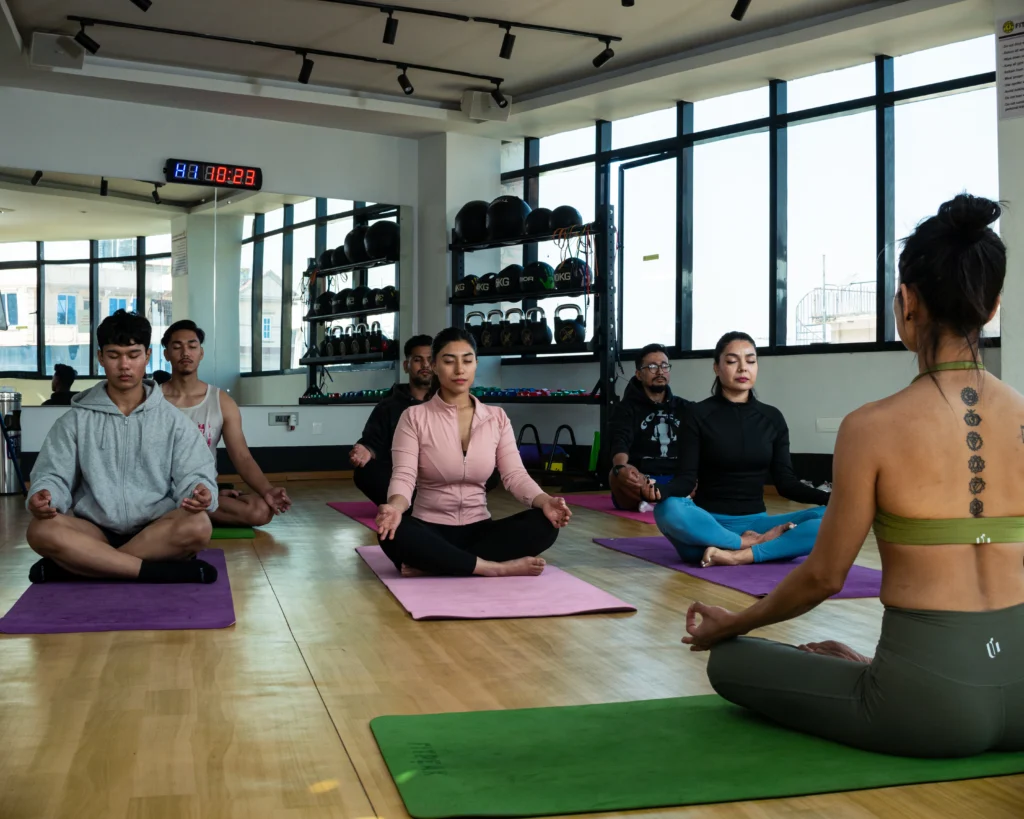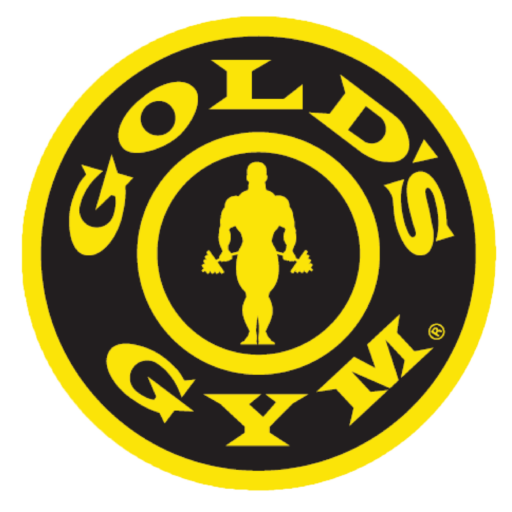Ever wonder what makes yoga stand out in the world of fitness? It’s not just another passing trend; yoga is an ancient practice that combines physical postures, breathing exercises, and meditation to promote overall well-being. It originated in India thousands of years ago and has since spread globally due to its physical, mental, and spiritual benefits. In the modern fitness world, yoga is often incorporated into people’s fitness regimens to enhance their physical strength, flexibility, and mental clarity.
In this article, we’ll explore the role of yoga in fitness, its many benefits, different styles, and how to get started on your yoga journey.
The History and Origins of Yoga
Yoga’s roots trace back over 5,000 years to ancient India, where it was initially practiced as a spiritual discipline. The word “yoga” is derived from the Sanskrit word “yuj,” meaning “to unite” or “to join.” The practice originally aimed at uniting the mind, body, and spirit. Over the centuries, it has evolved into different styles that are practiced worldwide today, including Hatha Yoga, Vinyasa Yoga, Ashtanga Yoga, and more.
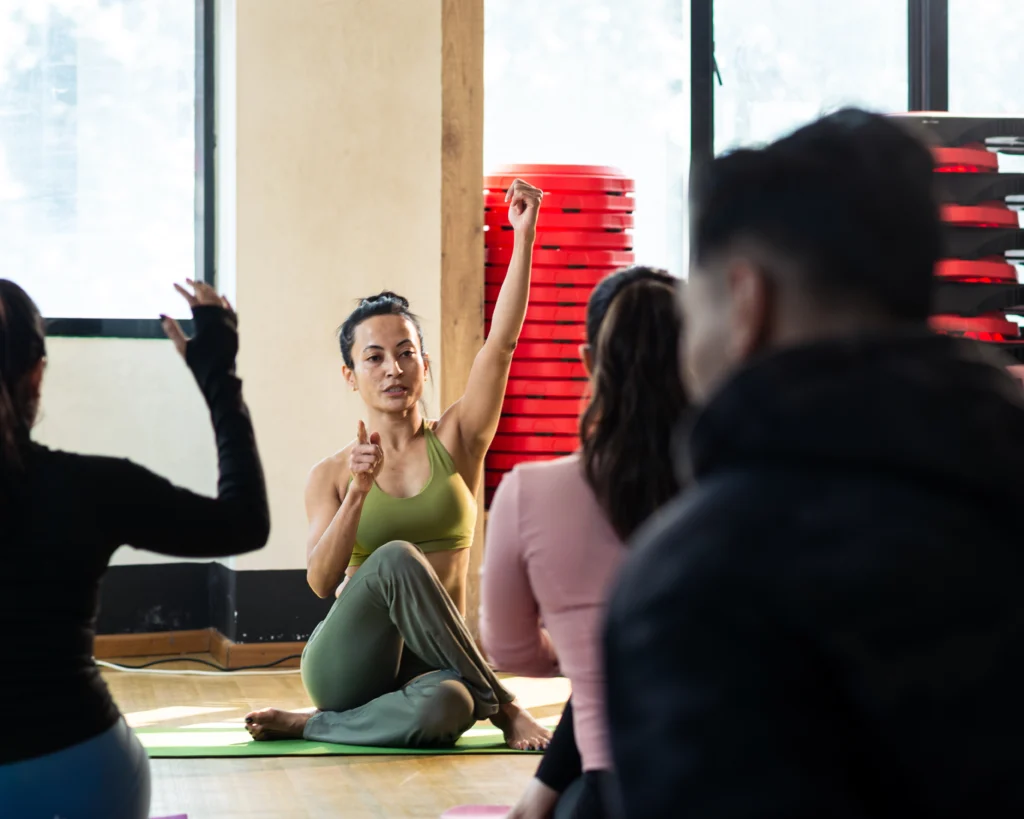
Today, yoga is recognized as a holistic approach to physical fitness, mental health, and emotional well-being.
Benefits of Yoga
Yoga provides numerous benefits, ranging from improved flexibility to enhanced mental clarity. Here are some of the key benefits of yoga that make it a valuable addition to your fitness journey.
Physical Benefits of Yoga
Yoga is known for its ability to improve flexibility, balance, and strength. These benefits can have a positive impact on your fitness journey, making you stronger and less prone to injuries. Here are some of the key physical benefits of yoga:
Improves Flexibility and Balance
One of the most well-known benefits of yoga is its ability to improve flexibility. The various yoga poses help stretch and strengthen muscles, improving the range of motion in joints and preventing stiffness. Yoga also enhances balance, which is important for overall stability and injury prevention, especially as we age.
Enhances Muscle Strength
While yoga might not involve weightlifting, many yoga poses require the engagement of multiple muscle groups. Holding positions like the plank or warrior pose builds strength in the arms, core, and legs. Yoga can be an excellent way to develop functional muscle strength, complementing other strength-building exercises.
Supports Joint Health
Yoga improves joint health by promoting circulation and flexibility in the muscles surrounding the joints. The low-impact nature of yoga makes it a great choice for those looking to protect and strengthen their joints, particularly individuals with arthritis or other joint issues.
Increases Core Stability
Many yoga poses focus on core strength, which is essential for maintaining proper posture and preventing injuries. A strong core is vital for balance and stability in all types of physical activities, making yoga an excellent addition to your fitness routine.
Mental and Emotional Health Benefits
In addition to its physical benefits, yoga offers significant mental and emotional advantages that can greatly enhance your fitness journey. Here are some of the key mental & emotional benefits of yoga:
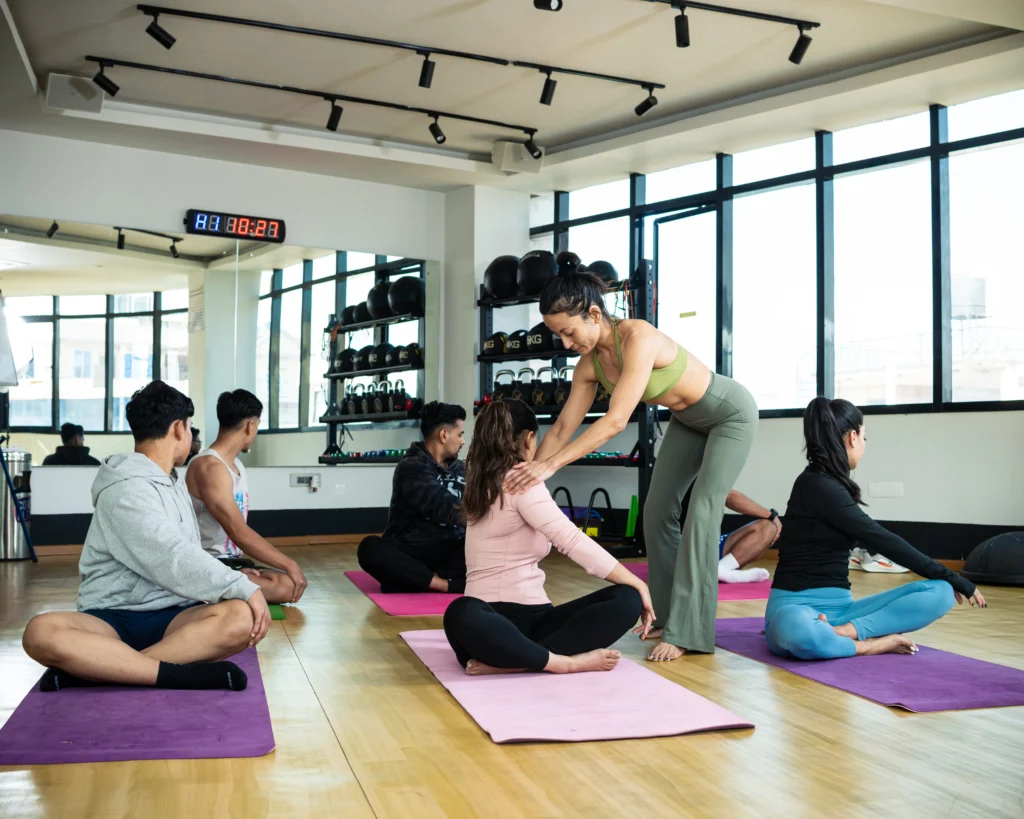
1. Reduces Stress and Anxiety
Yoga has been shown to lower levels of the stress hormone cortisol in the body. Through deep breathing, mindful movements, and meditation, yoga promotes relaxation, which can help manage stress and anxiety levels. These mental health benefits make yoga an ideal complement to high-intensity workouts or fast-paced lifestyles.
2. Improves Focus and Concentration
Yoga’s emphasis on mindful movements and breath control helps improve mental focus and concentration. The practice encourages you to be fully present in the moment, which not only helps reduce stress but also enhances performance in other areas of your life, including workouts.
3. Boosts Mood and Reduces Symptoms of Depression
Yoga has been found to release endorphins, the body’s natural “feel-good” hormones. Regular practice can improve mood, boost feelings of positivity, and reduce symptoms of depression. Whether you are dealing with stress from daily life or recovering from a tough workout, yoga can elevate your mental well-being.
Yoga as a Complement to Other Workouts
Yoga is a versatile addition to any fitness journey. It not only complements physical & mental workouts but also aids in recovery. Here’s how yoga can enhance other workout styles:
Yoga and Weightlifting
Weightlifting is excellent for building strength, but it can also lead to tightness in muscles and joints. Yoga helps to counterbalance the effects of weightlifting by improving flexibility and releasing tension in the muscles, allowing for better range of motion and faster recovery.
Yoga for Cardio
While yoga may not be as high-intensity as running or cycling, it can still enhance cardiovascular health. Certain styles of yoga, such as Vinyasa or Power Yoga, incorporate dynamic movements that get your heart rate up and improve your cardiovascular endurance over time.
Yoga in Sports Performance
Yoga has long been used by athletes to improve performance and prevent injury. Many professional sports teams and individual athletes incorporate yoga into their training to improve flexibility, core strength, and mental clarity, which contribute to enhanced sports performance.
Yoga for Recovery
Yoga is an excellent way to recover after a challenging workout. Gentle stretching and restorative poses help alleviate muscle soreness and promote faster recovery by increasing blood flow to tired muscles. It also aids in reducing lactic acid buildup, allowing you to bounce back faster from intense physical activity.
Yoga Styles to Explore
There are various styles of yoga, each offering unique benefits. Here are some popular styles to explore:
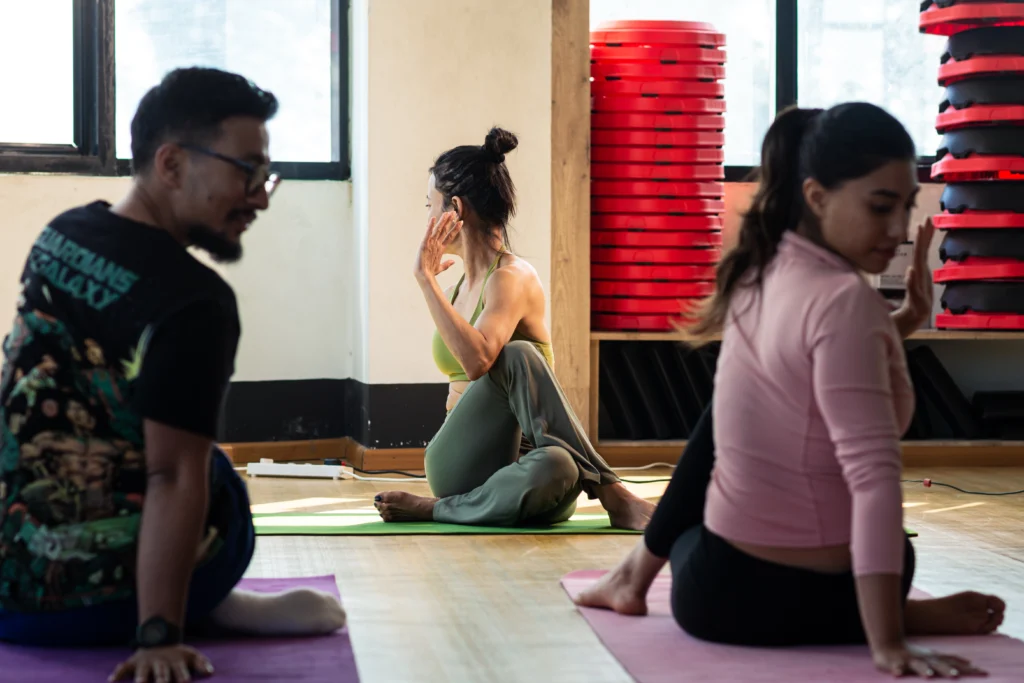
1. Hatha Yoga
Hatha Yoga is a gentle, slow-paced style of yoga focused on basic poses and breathing techniques. It is ideal for beginners and offers a great introduction to yoga.
2. Vinyasa Yoga
Vinyasa Yoga, often referred to as “flow” yoga, involves linking breath with movement in a flowing sequence of poses. It is a more dynamic and energizing style that can provide both strength and flexibility.
3. Power Yoga
Power Yoga is a high-intensity form of Vinyasa that focuses on building strength and endurance. It is ideal for those who want a challenging workout and are looking to burn calories.
4. Yin Yoga
Yin Yoga is a slow-paced practice that targets deep connective tissues such as ligaments, joints, and fascia. It involves holding poses for longer durations and promotes deep relaxation and flexibility.
5. Ashtanga Yoga
Ashtanga Yoga is a rigorous and structured form of yoga that follows a set series of poses performed in a specific sequence. It is physically demanding and is suitable for individuals seeking a challenging workout.
How to Get Started with Yoga
Getting started with yoga is easy, and the good news is you don’t need to be flexible or fit to begin. Here are some tips to help you start your yoga practice:
1. Find the Right Style of Yoga
Explore different yoga styles and choose one that suits your fitness level and goals. Beginners might start with Hatha or Vinyasa yoga, while those looking for a more intense practice may opt for Power Yoga or Ashtanga.
2. Start Small and Be Consistent
Consistency is key to mastering yoga. Begin with short sessions, even 10-15 minutes, and gradually increase the duration as you become more comfortable with the poses.
3. Use Online Resources or Join a Class
If you prefer to practice at home, there are countless online classes and tutorials available to guide you. Alternatively, joining a yoga class can provide you with personalized instruction.
4. Listen to Your Body
Yoga is about connection with your body, so listen to its signals. Avoid pushing yourself too hard, and focus on gentle, mindful movements. Over time, your flexibility and strength will improve.
Common Misconceptions About Yoga
There are several myths about yoga that may discourage people from practicing it. Let’s debunk some of the most common misconceptions:
Myth 1: Yoga Isn’t a “Real” Workout
Yoga is a full-body workout that can build strength, improve flexibility, and enhance endurance. While it may not always involve heavy lifting or high-intensity cardio, yoga is incredibly effective in developing a balanced, strong body.
Myth 2: Yoga is Only for Flexible People
Yoga is for everyone, regardless of flexibility. It is a practice that improves flexibility over time, so it is ideal for beginners and those who may not be naturally flexible.
Myth 3: Yoga Doesn’t Help in Weight Loss
Yoga can be an effective part of a weight loss program. While it may not burn as many calories as cardio or weight training, styles like Power Yoga and Vinyasa can provide a good cardiovascular workout and help tone muscles.
Myth 4: Yoga Is Only for Women
Yoga is for all genders. Men, especially athletes, benefit from yoga by improving flexibility, balance, and recovery.
Make Yoga a Part of Your Fitness Lifestyle
Yoga is an essential and versatile practice that can significantly enhance your fitness journey. From improving flexibility and strength to promoting mental clarity and reducing stress, yoga offers numerous benefits for both body and mind. Whether you’re a beginner or an experienced athlete, incorporating yoga into your routine can complement your other workouts, promote recovery, and help you achieve a balanced fitness lifestyle.
FAQs
1. Can yoga replace my regular workouts?
Yoga can be a great supplement to regular workouts, but it’s not a complete replacement for high-intensity activities such as weightlifting or running. It complements these workouts by improving flexibility, strength, and recovery.
2. How often should I practice yoga?
Practicing yoga 2-3 times a week can provide significant benefits. However, the frequency depends on your fitness goals and schedule.
3. Do I need to be flexible to start yoga?
No, you don’t need to be flexible to start yoga. Yoga helps improve flexibility over time, so anyone, regardless of their current flexibility, can begin practicing.
4. Is yoga effective for weight loss?
Yoga, particularly styles like Vinyasa and Power Yoga, can help with weight loss by improving muscle tone and increasing metabolism. Combining yoga with other exercises and a healthy diet is the most effective approach for weight loss.
5. Can yoga replace my gym workouts?
Yoga can enhance your gym workouts and provide a well-rounded fitness routine. However, if your primary goal is to build muscle mass or engage in high-intensity cardio, combining yoga with other workouts is recommended.

